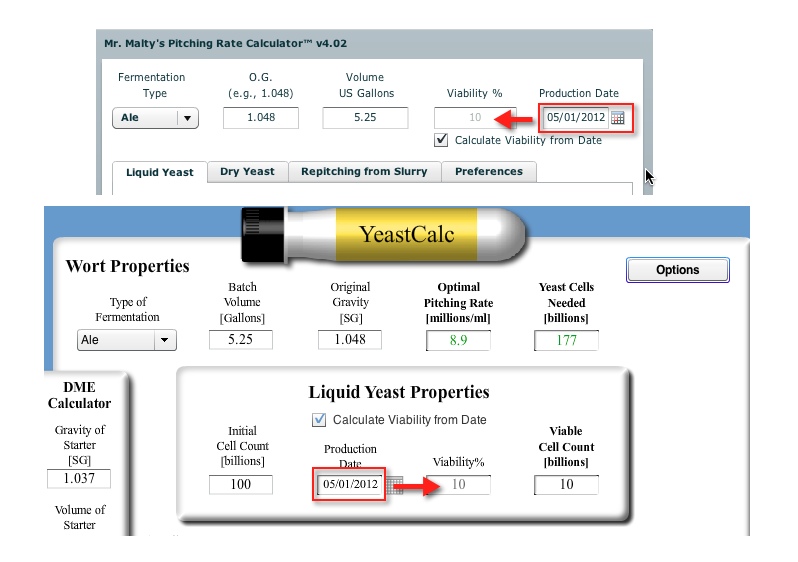In order to use Mr Malty or YeastCalc, you need to start by figuring out how many viable cells you have. Ideally, you'd count them directly... but few of us have the capacity to do this.
What I do is to start by figuring out how many mL of condensed slurry I have in the bottom of my pint jar. The easiest way to do this if it's a small amount is to set an identical jar next to it and add water until it's to the same level as the slurry, then pour out and weigh that water in grams---that's how many mL of slurry you've got.
The next question is how many cells were in there. To do this, you've got to figure out the density in cells/mL. Basing this on the book "Yeast" and the MrMalty documentation, if you have solid yeast, it's about 4.5 billion/mL, and about 1 billion/mL if it's a thin slurry. Mine are usually pretty solid, so I usually use something like 3 billion/mL as a guess. You've probably got 10-25% non-yeast mixed in also, so you ought to scale to account for that, but it's not really necessary given the other uncertainties in this process.
Ok, so you have X mL of slurry at Y billion cells/mL, so multiply the two numbers to get your cell estimate. Now you have to figure out the viability. You can get some idea by playing with the dates on the MrMalty calculator and watcing how its viability goes, but many people challenge the general validity of its model. I usually just assume it's between 50 and 100% and plan my starter steps so that I'll have an acceptable pitch rate at either extreme.
So, for example, on my recent rinsing, I had about 10 mL of compacted slurry, which is roughly 10 * 3 = 30 billion cells. I played around with yeast calc and came up with a 3 step starter that was right at the desired pitch rate for 15 billion cells (50% viability) and was about 15% high for 30 billion cells (100% viability). Using two or three steps will reduce your sensitivity to starting count somewhat. I think I used a 500 mL first step.
Hope that helps. It's not very precise, but I think it's about the best you can do short of counting cells.


























































